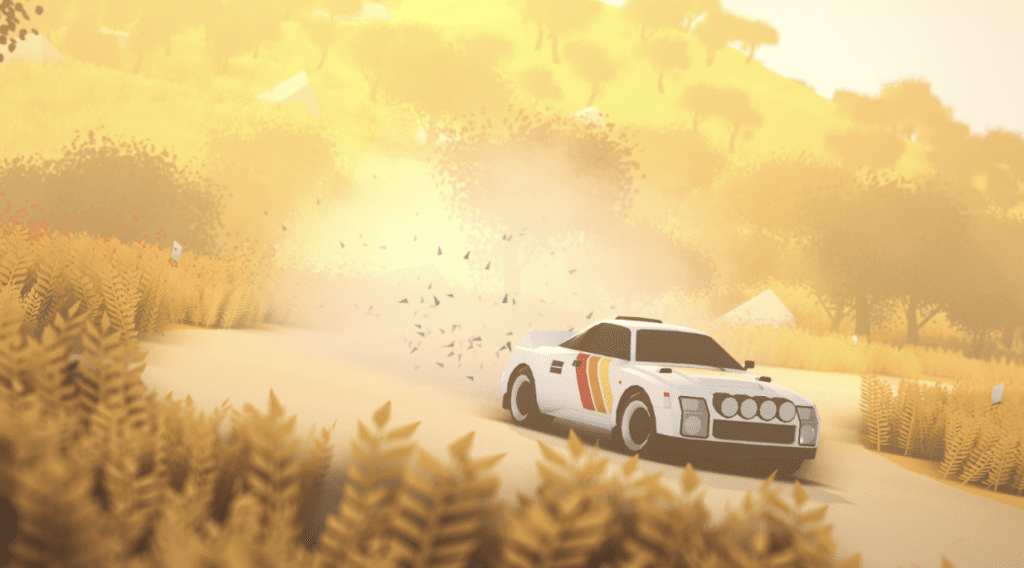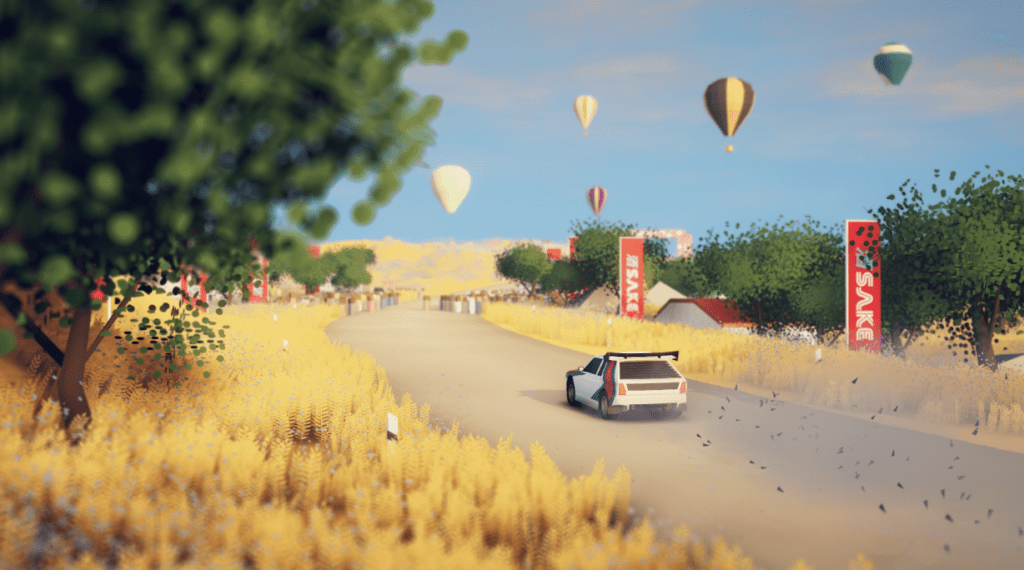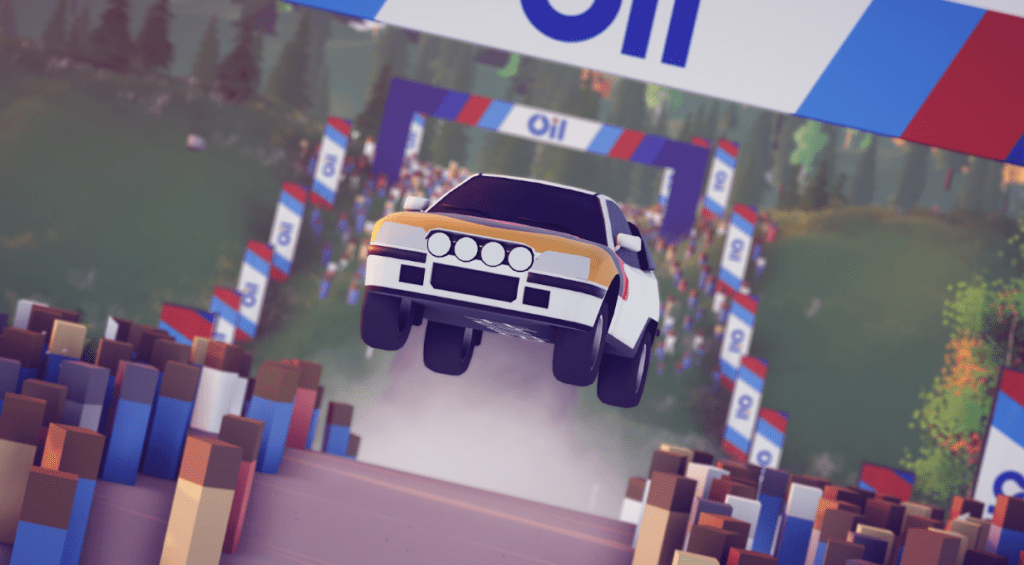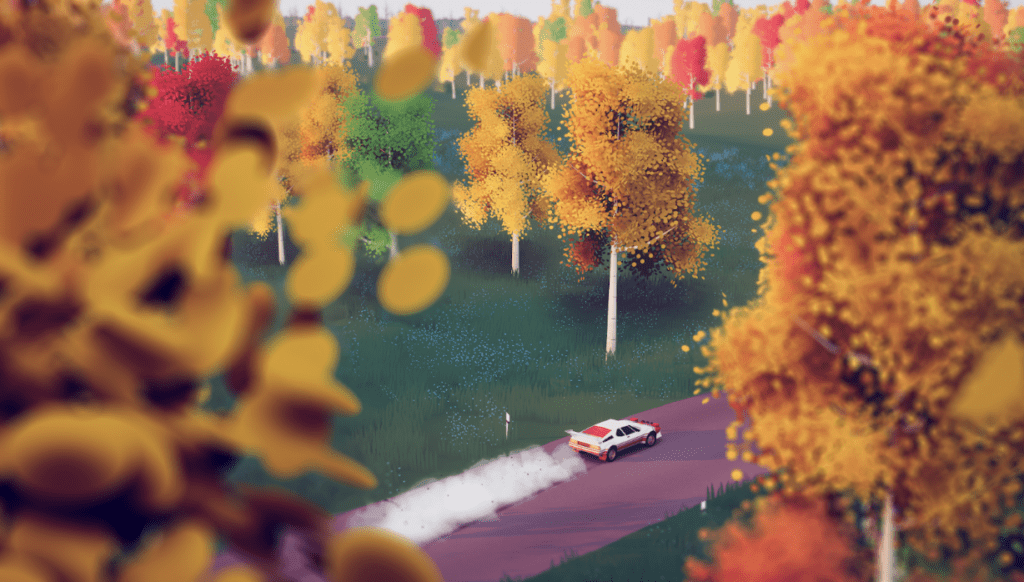With our wheels sliding into 2024, we feel we’ve put enough distance behind us to (somewhat) justifiably write about a game released in 2020. Just go with us here, because the game in question is an interesting one, particularly for Motorsports fans who get a shot of electricity up the spine at the mere mention of Group B.
Dune Casu, founder of development studio Fuselektor originally put gamers behind the wheel in a title called Absolute Drift that grew out of a 48-hour game jam where those who create games attempt to cultivate new and interesting ideas out of a steep time limit. Released originally on PC in 2015 and then additional gaming machines as the years have worn on, Absolute Drift is a racing game where just about the only thing you don’t want to do is drive straight. Success in its 34 tracks and 5 free roaming areas requires constant drifting.



Dune Casu would take the foundational parts of Absolute Drift and (with the help of other developers and creatives this time) install them into a spiritual successor that would bring the tactile thrill of navigating a powerful rally car along a serpentine track to game pads everywhere.
Originally released in 2020 on PC, Art of Rally imagines an alternate history where the infamous Group B regulations were not discontinued and the monstrously dangerous rally cars of the period some consider “the golden age of Rally” were allowed to continually evolve like so many gas-powered Pokémon. The spirit of the time is alive and well in the game in a form of cheeky, gallows humor as stylized crowds populate hard turns to alternate between cheering you on and screaming as they dive to avoid your oncoming speed machine. And while none of the cars in Art of Rally are licensed copies of their real world counterparts, there are more than a few silhouettes here that race fans will surely identify.
Like its predecessor, Absolute Drift, Art of Rally features numerous race tracks as well as a free-roam mode where players can take in the scenery at certain scenic points or collect cassette tapes as they drive around the track. The free-roam sections were no doubt inspired by Dune Casu’s wanderings around North America in a van while working on the game. All game modes are displayed in a top-down perspective that gives you the feeling of tracking the car across a detailed diorama built for Micro Machines. At this angle, every hairpin bend in the road is telegraphed with enough warning that when your rally car instead careens into a well-placed boulder or off the side of a mountain, you’ll be able to look on knowing that this turn of events was your fault. And as you sail through the air into a nearby tree, you’ll have at least a bit of time to enjoy the stylized visuals built of highly colorful but low-polygon environments and vehicles. The simplistic nature of the graphics mean they don’t get in the way of the task at hand, snaking your vehicle through treacherous terrain at high speeds in the name of glory.



Like many a great game, Art of Rally knows that it is easy to pick up and play but difficult to master. Perhaps that’s why the game generously starts you in a free-roam tutorial with a suggested training course before dropping you on a race track. The chances that you’ll spend a significant amount of time learning what not to do as you attempt to bank around rally mode are high in a way that vehicles falling off of steep mountain roads should not be. Still, persistence pays off in the form of new cars to bound around in and new liveries to dress them up.
Since its initial release, Art of Rally has appeared on various consoles including the PlayStation 5 and Nintendo Switch. Android and iOS ports of the game are available now so you can practice the art of rally as long as your phone has battery.
